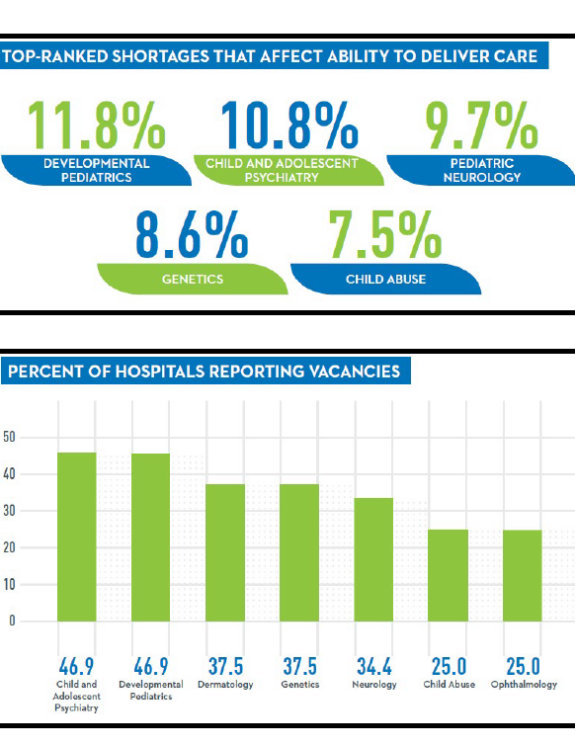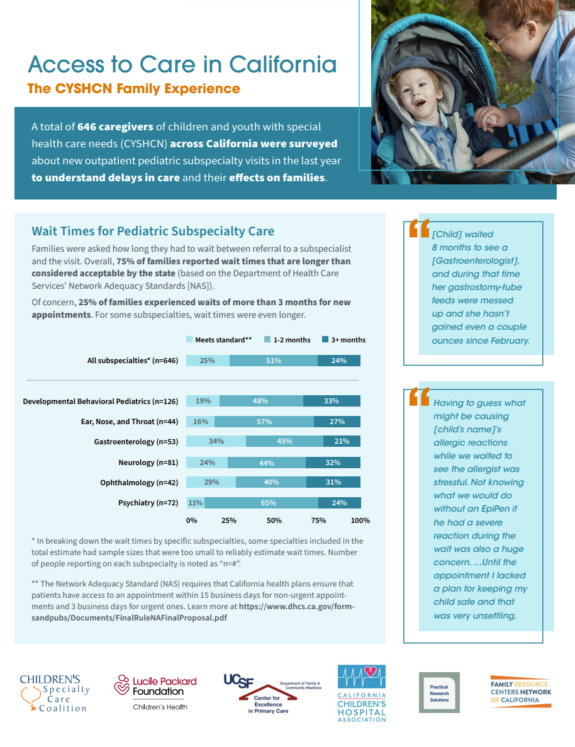We asked policy experts at Georgetown University to highlight three policy changes that the federal government could make to the system of care for CSHCN that would improve child health outcomes and enhance quality of life for families.
1. Provide Further Federal Financial Support for State Medicaid and CHIP Programs
Medicaid and the Children’s Health Insurance Program (CHIP) cover nearly half of children with special health care needs so both programs are essential in ensuring access to care for millions of CSHCN, especially during the COVID-19 pandemic. Both programs, however, are at risk of budget cuts. Congress has already provided aid to states to help them address budget cuts as revenues have plummeted, including a temporary increase in the Medicaid and CHIP matching rates that will last through the duration of the public health emergency, which the Biden Administration has indicated would extend through at least the end of 2021. Yet states still face an estimated $300 billion in revenue shortfalls through 2022.
Because nearly every state is required to balance its budget, states may be forced to make damaging cuts to Medicaid and CHIP. Under the temporary increase in federal Medicaid and CHIP funding, states cannot cut Medicaid and CHIP eligibility during the public health emergency (and under a separate requirement, cannot cut eligibility for children through 2027). They also cannot disenroll current and new Medicaid beneficiaries during the public health emergency. But they can make other cuts including reductions in reimbursement rates to providers — like hospitals, physicians, dentists, long-term service and support (LTSS) providers and managed care plans — which could reduce access to needed care for CSHCN if providers cut services, limit the number of Medicaid and CHIP patients they serve, or no longer participate in Medicaid and CHIP at all. These cuts could not only limit access to care in the short-term but also cause harm over the long run. That is because such budget cuts would adversely affect state economies and risk deepening and prolonging the COVID-19-related recession, which in turn could result in larger budget deficits and lead to further Medicaid and CHIP cuts.
Moreover, a growing body of research shows the long-term benefits of Medicaid and CHIP coverage for children in the areas of health, disability, educational attainment and financial security. This means that Medicaid and CHIP budget cuts that reduce access now could mean poorer life outcomes for children in adulthood. As a result, it is critical that Congress and the Biden Administration provide additional support for state Medicaid and CHIP programs — through a further temporary increase in the matching rates — as well as other financial assistance to states. That would avert budget cuts and ensure not only greater access to needed care for CSHCN today but also likely lead to better outcomes for CSHCN later in life.
2. Help State Medicaid Agencies Improve the Availability of Pediatric Utilization Data
Federal law requires state Medicaid programs to provide the comprehensive pediatric Early Periodic Screening, Diagnostic and Treatment (EPSDT) benefit to all children up to age 21. This benefit provides prevention-based screenings and treatments that are not required for adults or by private insurance plans, including treatment services that are not otherwise covered by a state Medicaid program. Yet available data suggest that state Medicaid programs are not living up to EPSDT’s promise for low-income children. A report from the California State Auditor, for example, found that children on Medi-Cal are not receiving needed preventive services. The Biden Administration could work with states to ensure they report more transparent and timely data, which would give a better picture of whether children are getting screenings, diagnostic tests and necessary treatment services. This data should include information by race and ethnicity and by plan and provider.
In addition, most children in Medicaid are now served by managed care plans contracting with states and many health systems are also promoting new payment models that are based on the chronic health needs of adults, not children. For managed care and these new models and systems to be effective, consistent, transparent, and timely data for children’s utilization will be critical to know whether children (and their families) are getting the care they need when they need it. One approach would be to encourage states to set up a child health dashboard that includes granular, plan-specific data.
3. Provide Cross-Agency Guidance to Show States New Possibilities for Medicaid Support for Young Children with Developmental Delays
State agencies have a great deal of flexibility in how they administer Medicaid, including how services to child beneficiaries can be delivered and supported. In recent years, for example, the federal government has provided guidance to states, with concrete examples, on home visiting and addressing maternal depression during pediatric visits. These guidance letters offer a sort of permission slip and roadmap that encourage states to take up new ways of delivering care, including to CSHCN.
One example where further federal cross-agency guidance is sorely needed is around the Individuals with Disabilities Education Act (IDEA), especially Part C related to early intervention for children ages 0-3. IDEA Part C requires states to identify and support young children with developmental delays and provide early intervention services. Combined with Medicaid’s EPSDT benefit, states have a strong incentive to find and serve these young children well before they enter kindergarten. For children also enrolled in Medicaid, many of these early intervention services can be covered by EPSDT, such as social-emotional screenings or family/dyadic therapy.
Our recent survey of state IDEA Part C directors conducted with the National Center for Children in Poverty found that while most states use Medicaid to support some Part C services, only ten states report using administrative data across agencies to ensure that Part C services are covered by Medicaid to the greatest extent (which in turns maximizes federal financial support for children enrolled in both Medicaid and IDEA Part C programs). (For children in early intervention, limited Part C dollars are the payer of last resort after Medicaid). Joint guidance from the Centers for Medicare and Medicaid Services (CMS) — which administers Medicaid and CHIP — and the Department of Education on how Medicaid and Part C funding can be maximized for the youngest children with developmental delays — with concrete state examples — would better help states make the most efficient use of funds and serve the greatest number of children.
Edwin Park is a research professor at the Georgetown University McCourt School of Public Policy and a leading health policy expert on issues related to Medicaid and children’s health care financing. Elisabeth Wright Burak is a senior fellow at the school’s Center for Children and Families and a Medicaid expert.



